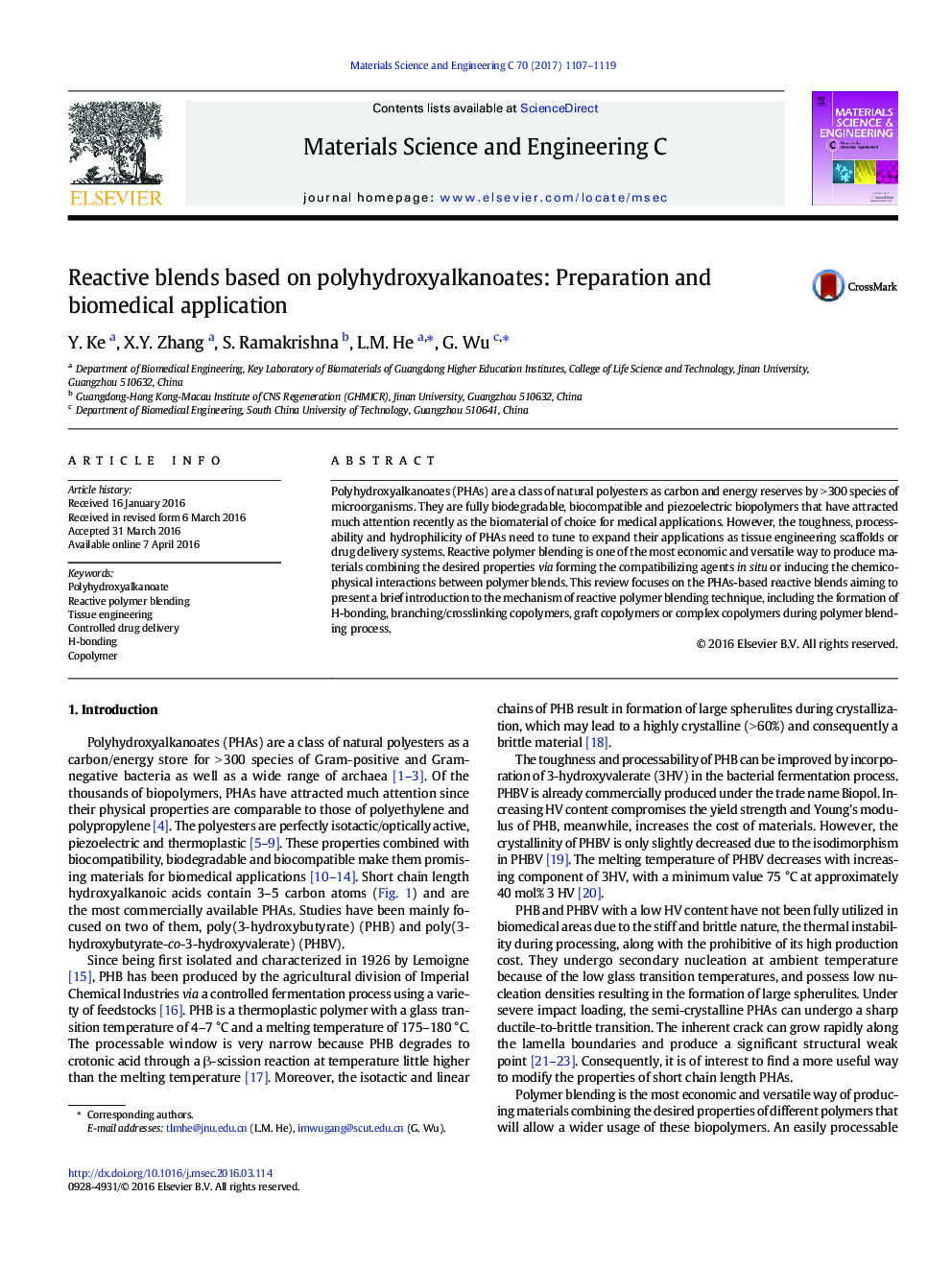| Article ID | Journal | Published Year | Pages | File Type |
|---|---|---|---|---|
| 7866751 | Materials Science and Engineering: C | 2017 | 13 Pages |
Abstract
Polyhydroxyalkanoates (PHAs) are a class of natural polyesters as carbon and energy reserves by >Â 300 species of microorganisms. They are fully biodegradable, biocompatible and piezoelectric biopolymers that have attracted much attention recently as the biomaterial of choice for medical applications. However, the toughness, processability and hydrophilicity of PHAs need to tune to expand their applications as tissue engineering scaffolds or drug delivery systems. Reactive polymer blending is one of the most economic and versatile way to produce materials combining the desired properties via forming the compatibilizing agents in situ or inducing the chemico-physical interactions between polymer blends. This review focuses on the PHAs-based reactive blends aiming to present a brief introduction to the mechanism of reactive polymer blending technique, including the formation of H-bonding, branching/crosslinking copolymers, graft copolymers or complex copolymers during polymer blending process.
Related Topics
Physical Sciences and Engineering
Materials Science
Biomaterials
Authors
Y. Ke, X.Y. Zhang, S. Ramakrishna, L.M. He, G. Wu,
